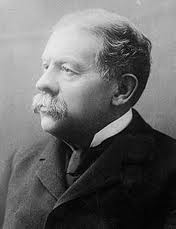Labor Day Examples of Using Photos to Illustrate Text
Biff Barnes
One of the best things about recent changes in book publishing technology is that today it’s easy to make a book fully illustrated.
The question is how to use illustrations to the best advantage. You may find that you have many more photographs or other possible illustrations that you’ll have space for. How do you decide which make the cut and get into the book?
Begin by understanding that photos can be used in different ways. You can use images to document the characters in your book. This usually means portraits of Great Grand Dad o Aunt Tillie, or your best friend from college. Such pictures may be historically important because they preserve the images of these significant people. However, the photos may not contribute much drama to your story.
Actions shot that capture a moment in time, along with a short caption, may tell a story in themselves enhancing the narrative you are developing in your text without interrupting it. They are the pictures worth a thousand words. The old Life and Look Magazines used them to create a whole new way of telling stories – photo journalism.
Since today is Labor Day let’s use that holiday’s origin to look at both ways of using photographs.
We’ll begin with what we might say in the text:
In the summer of 1894, after a year of depression following the financial Panic of 1893, railroad car mogul George Pullman fired one-third of his workers and the wages for those who remained by 30%. Although these employees live in the company town near Chicago and shopped at the company store, Pullman did not reduce prices or rents.

Eugene V. Debs, President of the American Railway Union, led his members out on strike in response to Pullman’s refusal to negotiate. Railroad service nationwide was disrupted when workers across the country supported the Chicago strikers and refused to handle trains containing even a single Pullman car.
President Grover Cleveland and his Attorney General Richard Olney, a former attorney for the Chicago, Milwaukee, and St. Paul Railway, sided with Pullman. Using the legal argument that the strike was interfering with the delivery of the mail, Cleveland declared, “If it takes the entire army and navy to deliver a postal card in Chicago, that card will be delivered.”
When the army arrived things turned violent. Strikers overturned railroad cars or set them afire, eventually accounting for over $8 million in property damage measured in today’s dollars. Soldiers and U.S. Marshalls killed 13 strikers and wounded 57 others.
 Having seen the nation brought to the edge of an abyss of class warfare Congress and the President acted quickly to pull back and reconcile with the growing labor movement. Six days after the Pullman Strike ended Congress unanimously passed a bill which Cleveland signed proclaiming Labor Day a national holiday.
Having seen the nation brought to the edge of an abyss of class warfare Congress and the President acted quickly to pull back and reconcile with the growing labor movement. Six days after the Pullman Strike ended Congress unanimously passed a bill which Cleveland signed proclaiming Labor Day a national holiday.
One could certainly illustrate the text with portraits of the principal actors, Eugene Debs and Richard Olney.
But, how much more interesting would the account become if it were accompanied by the image below?
 The image of soldiers firing on strikers from the railroad cars those union men had overturned demonstrates the urgency of the moment.
The image of soldiers firing on strikers from the railroad cars those union men had overturned demonstrates the urgency of the moment.
Both types of images are valuable. It's worth taking the time to find both and to use them appropriately to enhance your text.
Happy Labor Day!